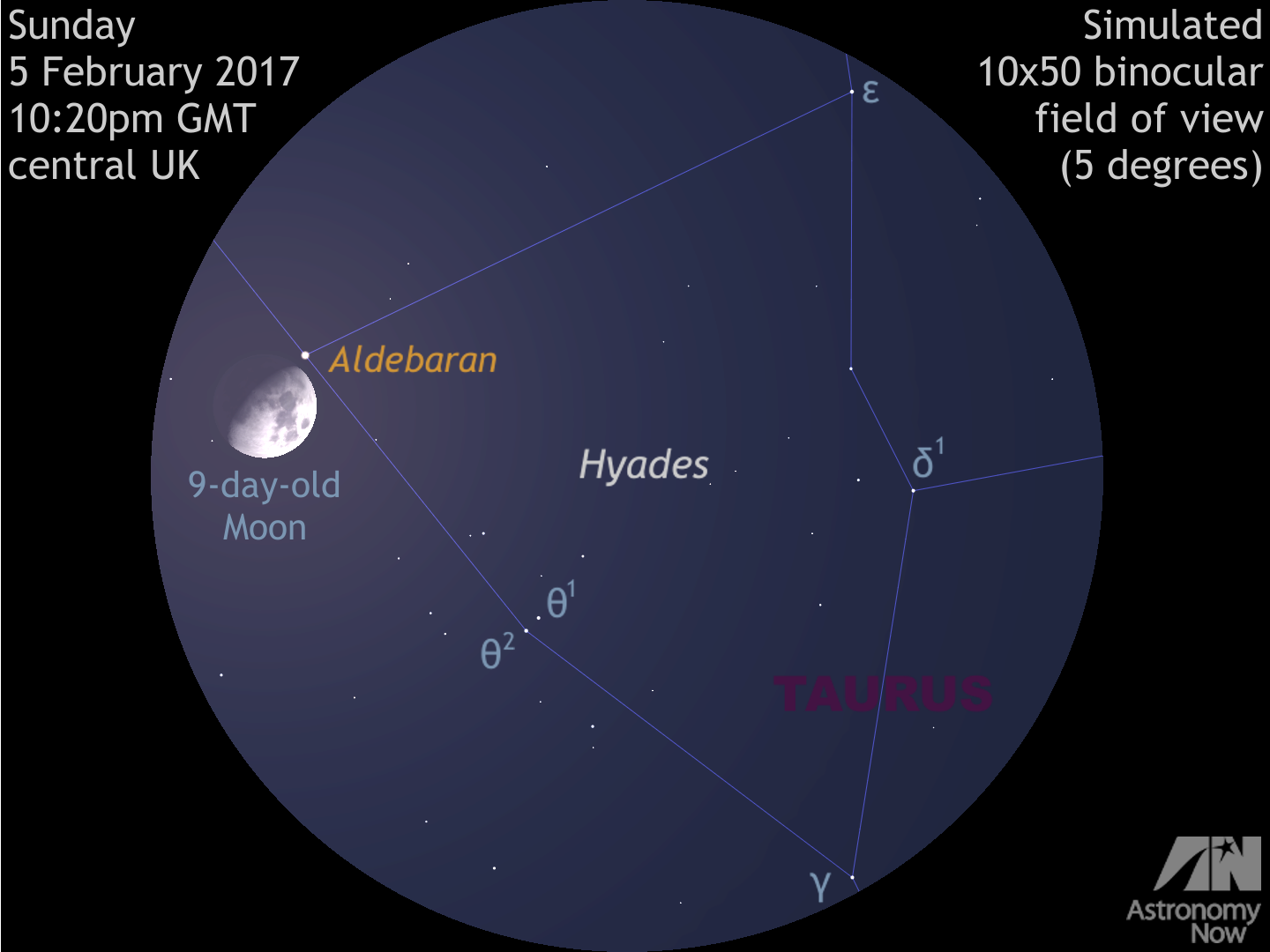See the Moons close brush with Aldebaran on 5 February
See the Moon’s close brush with Aldebaran on 5 February
BY ADE ASHFORD
4 February 2017 Ade Ashford

AN graphic by Ade Ashford.
The Sunday 5 February occultation of Aldebaran, the brightest star in the constellation of Taurus, is an afternoon daylight event for observers in S. Mexico, most of Florida, Central America, Caribbean and N. South America. Thereafter, the shadow of the Moon cast by Aldebaran travels eastward across the Atlantic into night.
The British Isles (with the exception of Guernsey and Jersey) lie north of the occultation track, but European observers located south of a line drawn between Paris, Graz in Austria and Constanța in Romania will see Aldebaran covered by the Moon. North Africa will witness the occultation too.
Observers throughout the UK will see the Moon pass close below Aldebaran, with those located in the Scilly Isles and the extreme southwestern tip of Cornwall witnessing the star almost grazing the lunar north polar regions around 10:21pm GMT. As seen from London, Aldebaran passes just 2 arcminutes north of the Moon at 10:25pm GMT.
http://astronomynow.com/2017/02/04/see-the-moons-close-brush-with-aldebaran-on-5-february/
